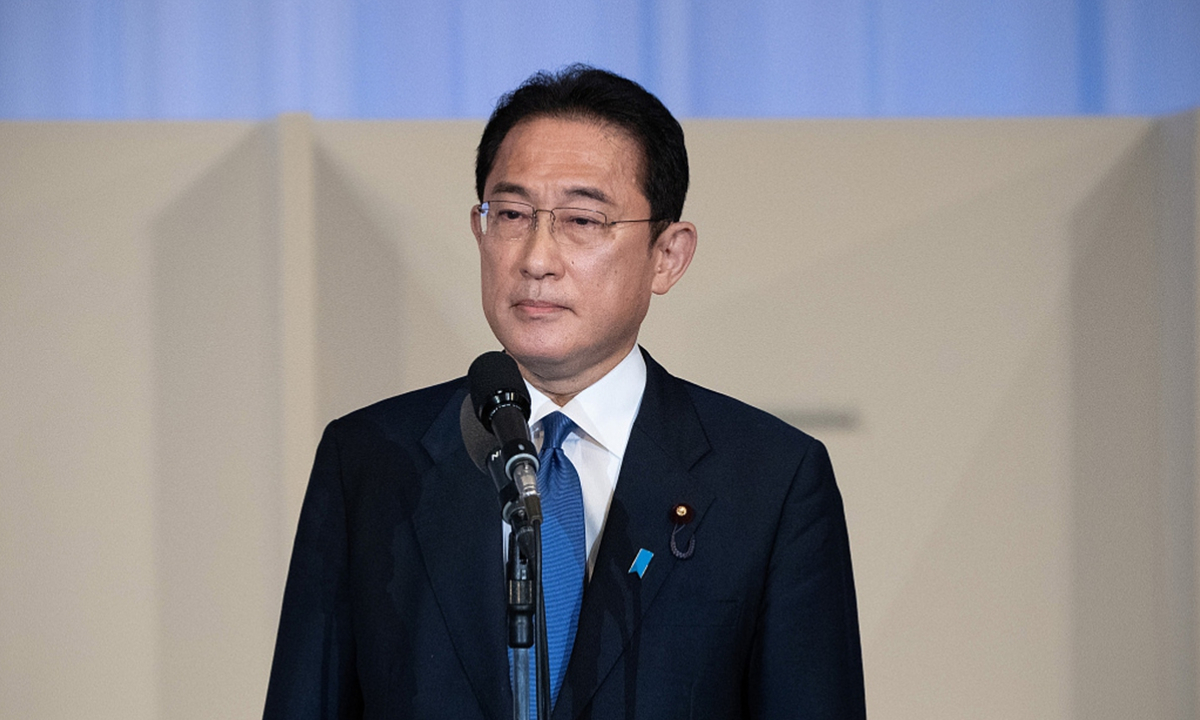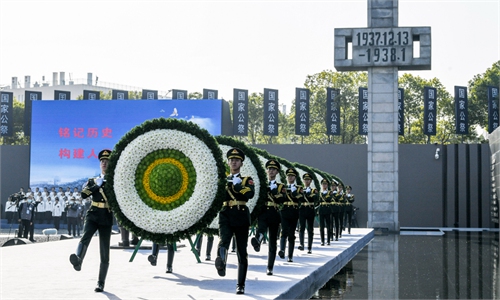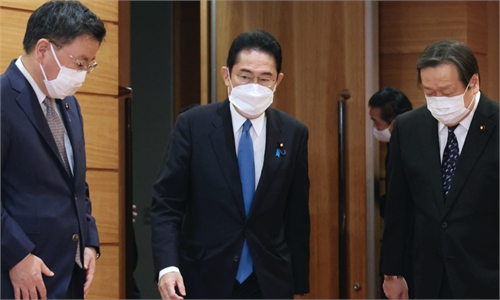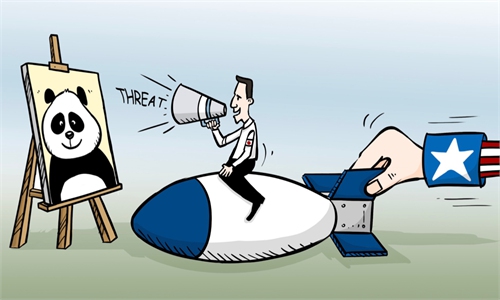Positioning China as a ‘threat’? Japan advised to take it easy: Global Times editorial

Fumio Kishida. Photo: CFP
Japan's Liberal Democratic Party (LDP) and the Komeito party reached an agreement on Monday on the draft revisions of three security documents of "National Security Strategy," "National Defense Strategy" and "Defense Force Preparedness Plan." The 2013 version of Japan's security strategy describes China's actions as an "issue of concern," while in this draft revision, China is labeled as an unprecedented "strategic challenge." It was also written in the draft that Japan will possess the capability to launch counterstrikes against facilities such as missile-firing sites and other enemy targets. The document is planned to be finalized through a cabinet resolution on December 16 at the earliest. This is the first revision since Japan formulated its current security strategy in 2013, and it is also a major change in Japan's security policy after World War II. The signal it releases is undoubtedly very dangerous.
According to media reports, these documents have been discussed for a long time in Japan, and the most argued subject is whether China should be positioned as a "threat" or a "challenge." It is reported that the LDP advocates the use of "threat." In the previous draft, the Chinese People's Liberation Army's military exercises surrounding the island of Taiwan were described as "a threat to our country and the residents of the region." However, the Komeito party, which values relations with China, took a relatively cautious attitude. A "compromise" plan was finally adopted, retaining the word "threat" but deleting expressions such as "our country," which intends to downplay the connection with the China-Japan relationship. Obviously, they all know what it means to directly refer to its neighboring country as a "threat" in national strategic documents.
It is possible that Japan played a bit of wordplay on the final wording, but the differences are superficial. Its real meaning, intent and target cannot be concealed. Even the right-wing Yomiuri Shimbun said that in international relations, calling a country a "threat" is actually declaring it an enemy. It is not difficult to find that the Japanese authorities are increasingly inclined to treat China as a "threat" in actual actions. This is also the most important reason why Japan's radical and irrational behavior has begun to increase significantly in the past two years. If you treat China as a "threat," you actually become a "threat" to China, and in turn China will really become a "threat" to you. Japan is creating a crazy vicious circle. However, China's current comprehensive strength is much higher than that of Japan, and most of the destructive impact of this vicious circle will be digested and borne by Japan alone.
The latest "capability to launch counterstrikes" written in the new security strategy actually means to develop the external attack capability of the Japanese Self-Defense Forces. According to reports, Japan plans to deploy 1,000 cruise missiles with a range of more than 1,000 kilometers. The range of its self-developed missiles has also been extended to 1,500 kilometers. It also plans to deploy hypersonic missiles in 2030, greatly breaking through the long time maintained 200-kilometer "self-defense range." The country has also achieved many "breakthroughs" in trying to get rid of the shackles of the pacifist constitution, including the Self-Defense Forces "going overseas" and selling arms to other countries. The Self-Defense Forces have no longer merely targeted "self-defense." Many even believed that the pacifist constitution has existed in name only. For Japan, which once went astray and caused serious disasters in the Asia-Pacific, the consequences of falling into a wrong path again are absolutely unbearable, but now the country has stepped in with one foot.
We have noticed that Japan's relevant strategy documents over the years have shown a clear escalation process in terms of its position on China: from "worry" to "serious concern" and "graveconcern" to "the biggest strategic challenge." During this period, China's policy toward Japan has not changed, and has always followed the four political documents between China and Japan, which are reflected in all strategicl documents related to China-Japan relations. The important consensus that the two countries should "be partners, not threats" has been clearly written into the fourth political document between China and Japan, and has been repeatedly confirmed in the meetings between the leaders of the two countries. What has changed is the power balance between China and Japan and Washington's attitude toward China. The rise of Japan's hostility toward China is not unrelated to these two variables.
In our opinion, the insecurity shown by Japan is largely feigned to find excuses for the loosening of constraint on its military power. Every point Japan arches forward in this direction implicates the fracturing of the security pattern in the entire East Asian region. December 13 is the 85th anniversary of the Nanjing Massacre. But on this day, from politicians to the media in Japan, almost all of their attention was put on the discussion of arms expansion and war preparations, which is very ironic. This step is not only wrong but also dangerous. Using this to guide the national security strategy will definitely lead Japan into a dangerous and barbaric drift, and the end is a huge dark vortex. We advise Japan to take it easy.
Let's be more realistic. Since China is regarded as a security "challenge" or even "threat," it is logical to expand its armaments. Japan will greatly increase its defense budget for the next five years, and the funding gap will reach trillions of yen. Here comes the question: where does this money come from? Fumio Kishida's government proposed tax increases, which were met with fierce opposition in Japan. We would like to say to the Japanese people, save your money, it is really a pure waste.



